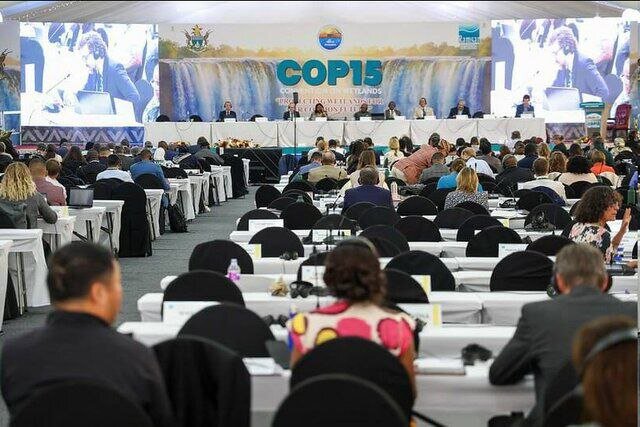Iran elected as vice-chair of Ramsar Convention on Wetlands meeting

TEHRAN – The new Standing Committee of the Convention on Wetlands has elected Iran as the Vice-Chair for the 15th meeting of the Conference of the Parties (COP15) to the Ramsar Convention on Wetlands, which is taking place from July 23 to 31 July in Victoria Falls City, Zimbabwe.
The meeting is being held under the theme “Protecting Wetlands for our Common Future.” This COP aims to adopt a new strategic plan for 2025-2034, the Convention’s fifth action plan.
The Ramsar Convention on Wetlands was signed in the city of Ramsar, Iran, in 1971. This intergovernmental treaty provides the framework for international cooperation on wetland conservation. The convention officially came into force in 1975.
Since then, many countries have become Contracting Parties to the convention. Saudi Arabia is the 173rd one, ISNA reported.
Moreover, the three Iranian cities, including Babol in northern Mazandaran province, Kiashahr in northern Gilan province, and Gandoman in southwestern Chaharmahal-Bakhtiari province, received wetland city accreditation certificates on the first day of COP15 of the Ramsar Convention on Wetlands.
A city’s commitment to wetland conservation, awareness, active engagement in sustainable practices, and integration of wetland conservation into planning makes it a strong candidate for this recognition.
A candidate city for the Wetland City Accreditation will be assessed and recommended as an Accredited Wetland City by an Independent Advisory Committee after being proposed by the Contracting Party (through its Ramsar National Focal Point or Head of Administrative Authority) on whose territory it stands.
The list of 31 newly accredited Wetland Cities was formerly announced at the 64th meeting of the Standing Committee.
The city of “Bandar Khamir” near the Khorkhoran International Wetland in Hormozgan province was recognized and introduced as the first wetland city in Iran by the Ramsar Convention in 2022, IRNA quoted Arezou Ashrafizadeh, an official with the Department of Environment (DOE), as saying.
In the same year, the city of Varzaneh, in the east of Isfahan province, and Bandar Khamir, near the Gavkhuni International Wetland in Isfahan province, were recognized as wetland-accredited cities as well, Ashrafizadeh noted.
There are also 25 sites in the country designated as Wetlands of International Importance (Ramsar Sites), covering a surface area of 1,488,624 hectares.
Wetland City Accreditation scheme
The 172 Contracting Parties to the Ramsar Convention on Wetlands have agreed to the conservation and wise use of wetlands in their territories.
Recognizing the importance of cities and urban wetlands, the Convention has introduced a Wetland City accreditation scheme (Resolution XII.10).
This voluntary scheme provides an opportunity for cities that value their natural or human-made wetlands to gain international recognition and positive publicity for their efforts.
The Wetland City Accreditation scheme will encourage cities in close proximity to and dependent on wetlands, especially Wetlands of International Importance, to highlight and strengthen a positive relationship with these valuable ecosystems, for example, through increased public awareness of wetlands and participation in municipal planning and decision-making.
The Accreditation scheme should further promote the conservation and wise use of urban and peri-urban wetlands, as well as sustainable socio-economic benefits for local people.
Urban wetlands are prized land, not wasteland, and therefore should be integrated into the development and management plans of cities.
When preserved and sustainably used, urban wetlands can provide cities with multiple economic, social, and cultural benefits. During storms, urban wetlands absorb excess rainfall, which reduces flooding in cities and prevents disasters and their subsequent costs. The abundant vegetation found in urban wetlands acts as a filter for domestic and industrial waste and contributes to improving water quality.
MT/MG
